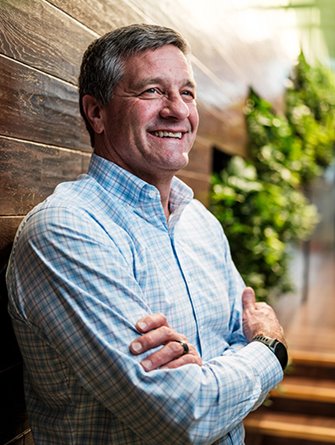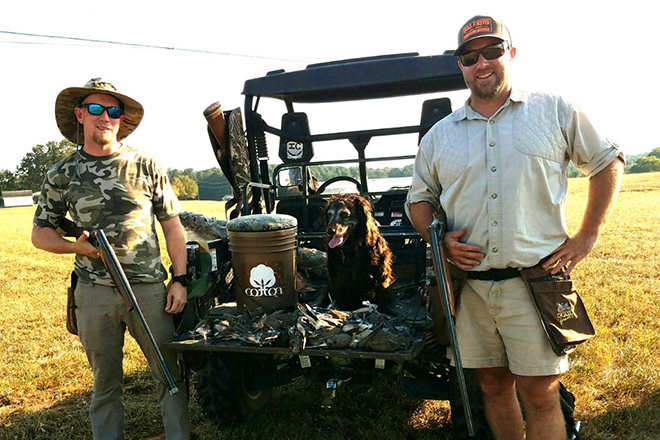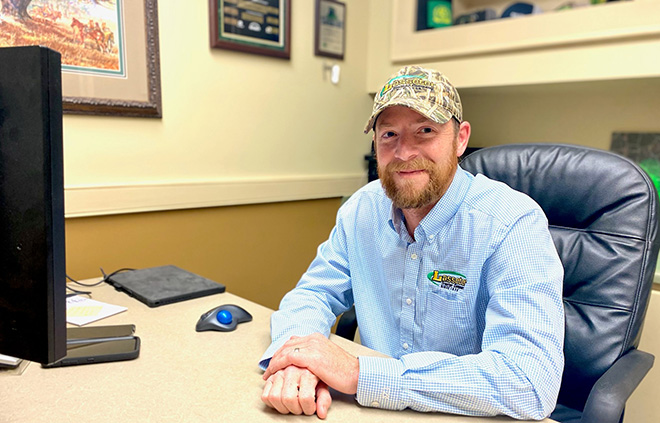
Three pioneers uniting agriculture and conservation
By Greg Breining
For quail, especially the northern bobwhite of the eastern United States, it is the best of times and the worst of times.
During the last half-century, according to the North American Breeding Bird Survey, bobwhite quail declined up to 4 percent per year—a cumulative decline of 85 percent. The 2014 State of the Birds report, the work of 23 agencies and organizations, listed bobwhites as a “common bird in steep decline.”
Yet where habitat persists—think the grasslands of central Kansas—bobwhite quail continue to thrive. Efforts in the southeastern United States—the venue of “classic” bobwhite habitat and hunting—have shown that intensive efforts to open the canopy of mature forests and restore an understory of native grasses can revive flagging populations of bobwhites. Likewise, when farmers convert unproductive areas of farmland to strips and patches of grassland, bobwhite quail can bounce back.
Farmers and others in agricultural industries have aided quail by promoting the restoration of grass and other native habitat in farming operations. Many are promoters or adopters of “precision agriculture,” which in combination with expert advice and government conservation programs, enables farmers to be more parsimonious in their use of fertilizer and pesticides and to identify, retire and restore land that is marginally profitable.
The potential is more land for wildlife, even as farms become more productive. While there’s still plenty of need for public conservation and hunting lands, and restoration projects by organizations such as Quail Forever, farming with an eye to conservation and environmental benefits can increase the wildlife value of working farms.
Beginning with this issue and continuing in Summer and Fall, we’ll showcase a few of the pioneers in the ag community who are leading these efforts to maximize farm and wildlife production on agricultural land.

Lane Arthur
GPS-based and computerized “precision agriculture” began taking off in the early 2000s, led by companies such as John Deere that held a big part of the market and were investing heavily in the new technology.
“We are at the forefront of really using technology to help our customers operate more efficiently and effectively,” says Lane Arthur, director for the Information Solutions Business of the John Deere Intelligent Solutions Group in Des Moines, Iowa.
That was the point—efficiency and effectiveness. Only later did it became apparent that precision ag could also be a tool for conservation.
Precision ag began with GPS-guidance and steering systems. “Farmers could drive straight lines and drive them longer because the tractor did it for them,” says Arthur.
“About 10 to 12 years ago we put modems in every machine so we could move data off,” he says. Systems became more precise. “I can basically take a one-acre field and break it into a series of pizza box–sized squares,” says Arthur. “You can manage it at a pizza-box level.” Farmers can store field data about yields and inputs for each year to secure cloud-based accounts. That has opened up possibilities for conservation.
“Because we have the ability to manage a field on a very micro level, that enables us to identify areas where some of the land may be more productive than others,” says Arthur.
That’s where Quail Forever comes in, sitting down with farmers to explain what government conservation programs are available to provide income on less productive land and provide advice about best cover types for quail, other grassland birds, and pollinators.
Arthur says farmers are adopting precision ag technology, even on smaller farms. “They know the land is critical for them long term,” he says. “They’re looking for opportunities to use precision ag as a way of conserving more land.”
Arthur has an abiding interest in both agriculture and quail. Growing up in Warner Robins, Ga., he hunted nearby peach and pecan orchards for quail. In junior high, his dad let him take out the family pointer.
“Classic story,” says Arthur, a lifetime Pheasants Forever and Quail Forever member. “You got this bird dog, and you think you know where the birds are, but she actually knew better than we did. We were always trying to tell her something else, and she’d look at us like, I think you’re crazy. Birds are over here!”
.jpg.aspx)
Ryan Kurtz
Ryan Kurtz has seen firsthand the decline of northern bobwhite quail.
As a teenager walking northern Missouri farm fields in the early 1990s, Kurtz and friends would kick up two or three coveys in an outing. “In the early 2000s, we were lucky if we found one, and usually we found none,” he says. In that short time, farms had become bigger and cleaner, with fewer grassy strips necessary for ag land quail.
Now, as director of entomology and producer outreach for the trade group Cotton Inc. in North Carolina, “I’m still walking fields and trying to put two and two together,” he says. “Everywhere you go in the cotton belt there either used to be quail or there are still some, to some level.”
The cotton crop itself has little value to quail. “It’s not like corn and pheasants, or even corn and soybeans and quail,” he says. But as with those other crops, cotton farmers have opportunities for a win-win.
Kurtz remembers a presentation by Ryan Heiniger, North Region director of agriculture for Pheasants Forever and Quail Forever. Heiniger talked about “turning red acres green”—that is, identifying acres that cost more to farm than they produce and instead put those areas into habitat.
Conversations between Kurtz and Pheasants and Quail Forever staffers led to the Precision Partnership for Working Lands with a grant from the National Fish and Wildlife Foundation, contributions from Cotton Inc., and in-kind contributions from the American Society of Agronomy. The project focuses on restoring ag land quail in Georgia.
“Georgia was the low-hanging fruit,” says Kurtz. “It’s the number two cotton-growing state [after Texas]. The history of quail in Georgia is deep. And the area of cotton and quail overlap perfectly. If we were going to get this started, Georgia was going to be where it was.”
Chaz Holt, Quail Forever precision agriculture and conservation specialist, will help Georgia farmers analyze precision ag data to identify and convert unprofitable acres through federal conservation programs to income-producing habitat.
Kurtz, a Pheasants Forever and Quail Forever lifetime member, hunts quail and pheasants mostly in the Midwest and Great Plains with his Boykin spaniel and, soon, his Brittany pup.
“My selfish efforts in all of this are that I’d like more quail in the Southeast again,” he says. “Anything I can do to help.”

Dusty Engel
Manufacturers such as John Deere are building the heavy machinery and sophisticated technology that make precision ag possible. Quail Forever and government agencies provide the guidance and conservation programs that can transform underperforming ag lands into quail habitat.
The vital link to individual farmers and landowners is often the local implement dealer that has been a trusted source of information.
“We can kind of tie that together,” says Dusty Engel, integrated solutions manager for Lasseter Tractor Co., a fourth-generation family-owned John Deere dealer with seven stores in southern Georgia. The company promotes precision ag technology and sells it as an integral part of new tractors, combines, and other equipment. “So that’s where the combination of John Deere and Lasseter and Quail Forever kind of meet,” he says.
Georgia farmers are investing heavily in precision ag. Not only can farmers guide their tractors with GPS, track their harvest and yields in real time, and track inputs of fertilizer and pesticides, but they can also document this data year after year. Dealers like Lasseter work with farmers to interpret data and identify low-producing areas.
“We can sit down with a customer and pinpoint where those low areas are. Are they just a freak of nature that this year they were low-yielding areas? We can go back and look at historical yield maps, and it may be that each and every year we’re putting money into that portion of the field and not getting a return on it,” says Engel.
A Lasseter representative will sit down with a farmer and someone like Chaz Holt of Quail Forever to develop a plan to convert underperforming land to quail habitat with the help of government programs to provide income. Says Engel, “It seems to be pretty advantageous to be able to turn that into habitat instead of just letting it sit as idle land.”
Farmers are concerned about improving land for the long term, says Engel. “Some of these guys are really trying to look out for their kids and their grandkids as far as making sure that the quail are there and to be able to have that family time on their family farms.”
This story originally appeared in the 2021 Spring Issue of the Quail Forever Journal. If you enjoyed it and would like to be the first to read more great upland content like this, become a Quail Forever member today!